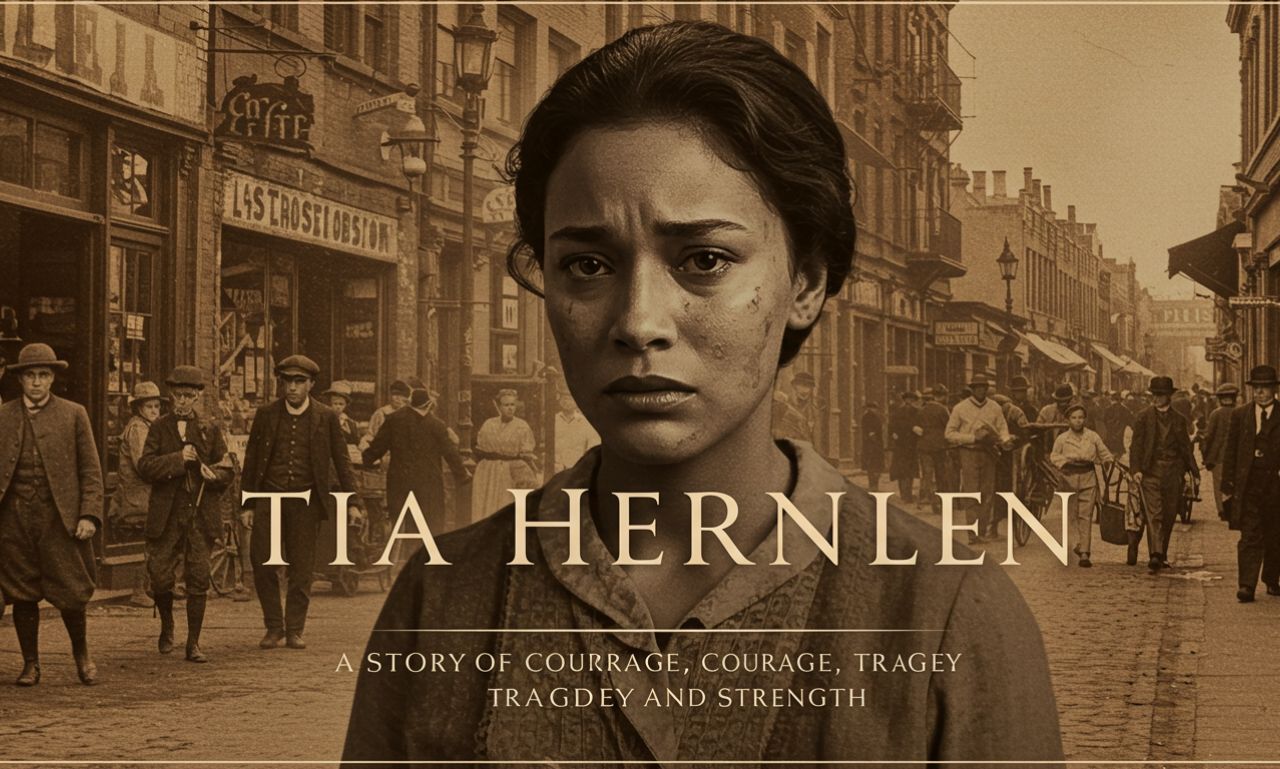The name Tia Hernlen echoes as a powerful symbol of courage and resilience in the face of unimaginable tragedy. At just five years old, Tia made a calm and composed 911 call after waking up to a horrifying scene—her parents had been shot in their home by a known assailant. Her mother tragically passed away, while her father succumbed to his injuries shortly after. Despite the trauma, Tia’s quick thinking likely saved her own life and sparked an outpouring of national support.
This tragic incident not only shed light on the flaws within the justice system, particularly regarding prior threats and legal protection, but also ignited conversations around child trauma, domestic violence prevention, and community responsibility. Over the years, Tia’s story has remained a profound reminder of how even the youngest voices can demonstrate extraordinary strength. Her journey continues to inspire advocacy efforts aimed at creating safer environments for children and families across the country.
The Tragic Night: What Happened to Tia Hernlen’s Family
In the early hours of a quiet March night in 2005, tragedy struck the Hernlen family’s Florida home. Tia Hernlen, only five years old at the time, woke up to the sound of gunshots and found both of her parents severely wounded. Her mother, Julie Hernlen, lay lifeless, while her father, Jeff Hernlen, was still alive but gravely injured. Unaware of the full horror she had just walked into, Tia showed remarkable composure far beyond her years.
The shooter, David Edward Johnson, a man with a troubling history and known disputes with the family, had broken into their home. Despite previous warnings to authorities about Johnson’s erratic behavior, no significant legal action had been taken to protect the Hernlens. That night, Johnson carried out a brutal act of violence before taking his own life shortly afterward.
What happened that night not only shattered a family but also exposed flaws in the legal system meant to protect victims from known threats. For Tia, the night marked the end of her childhood as she knew it, yet it also revealed an incredible inner strength that would capture the hearts of a nation. Her story began with tragedy—but it would become one of resilience and national attention in the days that followed.
Tia Hernlen’s Brave 911 Call: A Child’s Courage in Crisis
In the immediate aftermath of the shooting, Tia Hernlen did something extraordinary—something that most adults might struggle to do under similar circumstances. She picked up the phone and dialed 911. Calmly and clearly, she spoke to the dispatcher, explaining that her parents had fallen and were bleeding. She didn’t cry or panic. Instead, she stayed composed, describing the scene around her and expressing quiet confusion over why her parents weren’t waking up.
The recorded call later stunned the nation. Hearing such clarity, innocence, and courage in the voice of a five-year-old was both heartbreaking and awe-inspiring. Tia guided emergency services to the scene, remaining on the line while staying near her father, who was still breathing at the time. Her words were simple but deeply moving: “I think they’re dead… I don’t know what happened.”
Tia’s calm demeanor and quick response were critical. She acted with a level of presence and bravery that likely expedited the arrival of help and ensured her own safety. That single phone call, made in the darkest moment of her young life, not only highlighted the trauma she had witnessed but also became a defining act of strength—one that would deeply resonate with everyone who heard it.
The Investigation and Legal Outcomes of the Case
Following the 911 call, authorities rushed to the Hernlen home and quickly began piecing together the events that led to the tragedy. Investigators identified the shooter as David Edward Johnson, a man with a known history of conflict with Jeff and Julie Hernlen. Reports revealed that the Hernlens had previously expressed concern over Johnson’s increasingly erratic and threatening behavior. They had even sought legal protection, alerting the authorities months before the incident occurred.
Despite their efforts, the system failed to intervene effectively. Johnson had been under investigation for drug-related offenses and had made threats that the Hernlens feared might escalate—but legal action against him stalled, and no restraining order or custody measures were enforced in time. On the night of the attack, Johnson broke into the Hernlens’ home armed and intent on violence. After fatally shooting Jeff and Julie, he returned to his own residence and took his own life before law enforcement could apprehend him.
The aftermath of the investigation raised difficult questions about gaps in the legal system, especially regarding domestic threats and the enforcement of restraining protections. The case became a painful example of how warning signs can sometimes go unheeded, even when families actively seek help. For many, it underscored the urgent need for stronger safeguards, faster legal response, and better communication between victims, law enforcement, and the courts.
Emotional and Psychological Impact on Tia Hernlen
For a five-year-old child, witnessing the loss of both parents in one night is a trauma that words can hardly capture. Though Tia Hernlen’s bravery during the 911 call was extraordinary, the emotional weight she carried afterward was immense. The sudden and violent nature of the tragedy left deep psychological scars, not just from the loss itself, but from the terrifying way it unfolded. In a matter of moments, her entire world changed.
In the days that followed, Tia was placed in the care of close family members, shielded as much as possible from media attention. But healing from such trauma is never immediate. Children process grief differently than adults, often revisiting pain in cycles as they grow and begin to understand the full meaning of what happened. Experts in child trauma emphasized the importance of a stable environment, therapeutic support, and time—lots of time.
Though private details of her recovery were largely protected to preserve her dignity and well-being, what is known is that the community and trauma specialists rallied around her. Tia’s story reminded many of how silent and long-lasting the impact of violence can be on young minds. Her ability to function so bravely in the moment was remarkable, but her journey through grief and emotional recovery was equally significant—one marked by courage, patience, and a community that refused to let her face it alone.
Community Support and Public Recognition of Tia’s Bravery
In the wake of the tragedy, the community surrounding Tia Hernlen responded with compassion, unity, and unwavering support. Local residents, organizations, and even people from across the country were deeply moved by her story. They didn’t just see a victim of a horrifying crime—they saw a brave little girl who, in the middle of the most terrifying moment of her life, chose to act with calm and clarity to save herself and help her parents.
Schools, neighbors, and charitable groups came forward to help provide emotional, financial, and logistical support. Fundraisers were organized, not just to assist with immediate needs, but to help secure Tia’s future. People donated generously, wrote letters of support, and offered services, all with one message: she was not alone.
Tia’s 911 call also gained national attention, sparking conversations in the media and among law enforcement agencies about child bravery and emergency preparedness. While the public was careful not to sensationalize her trauma, many recognized her courage as something that deserved to be honored. Quietly and respectfully, Tia became a symbol of resilience—proof that even in the darkest hours, human strength can shine through the smallest of voices.
Tia Hernlen’s Advocacy and Efforts for Victims’ Rights
As Tia Hernlen grew older, her story evolved from one of tragedy to one of quiet purpose. Though she was just a child when the events occurred, the impact of that night shaped her perspective on safety, justice, and the importance of protecting vulnerable individuals—especially children and families threatened by violence. While much of her life remained private, her name became closely associated with advocacy for victims’ rights and reform in how the justice system responds to early warning signs.
Over the years, her experience inspired many discussions in legal and social work circles about the gaps in protective measures and how to prevent tragedies like hers from happening again. Advocacy groups cited her case when pushing for stronger domestic violence legislation, better victim support systems, and faster legal action against known threats. In this way, Tia’s story became more than just a headline—it became a catalyst for change.
Though Tia herself remained mostly out of the public eye—a choice respected and protected by those around her—her voice lived on through initiatives, campaigns, and educational efforts led by others on her behalf. Her name reminded people why it matters to listen, act, and protect before it’s too late.
Legacy of Strength: What We Learn from Tia Hernlen’s Story
Tia Hernlen’s story is not only about a tragic night—it’s about what follows when unimaginable pain meets quiet strength. Her legacy lies in more than just her brave 911 call; it’s reflected in the conversations her story sparked, the laws her case helped influence, and the awareness it raised about the silent dangers families sometimes face behind closed doors. She became a voice for children affected by violence—not by choice, but by courage born in crisis.
From Tia’s experience, we learn the importance of listening to early warnings, of building systems that respond faster and protect more effectively. Her story teaches us how trauma doesn’t define a person—it reveals what they are capable of enduring. In her silence, and in the protection of her privacy, there is still a powerful message: resilience does not always roar. Sometimes, it whispers quietly in the life that keeps going, even when everything has changed.
Tia’s legacy continues in every child given shelter, every family offered protection, and every call that’s taken seriously because someone remembered what happened when one wasn’t. Her name will always remind us that the smallest voices can make the greatest impact—and that from the darkest moments, light can still rise.
Conclusion: Reflections and Societal Lessons from the Tragedy
Tia Hernlen’s story is one of tragedy, yes—but more importantly, it is a call to reflect. It reminds us that behind every quiet neighborhood and closed door, there can be unseen struggles, unheard cries for help. Her experience exposed how flaws in the justice system—delays, missed warnings, and lack of protective measures—can lead to irreversible loss. It also showed how the smallest acts of bravery, like a child calmly dialing 911, can leave an impact far greater than anyone might expect.
As a society, we are challenged to do better—to listen more carefully, to act more urgently, and to protect those who rely on our systems for safety. Tia’s life was forever changed by one horrific act, but the response that followed—support from her community, national awareness, and legal conversations—shows that even in loss, there can be learning.
Her legacy pushes us to remember that prevention is just as important as justice, and that empathy must extend beyond reaction to responsibility. Through her story, we are reminded of the quiet strength that lives in children, the duty we have to protect it, and the importance of never letting such moments be forgotten.

